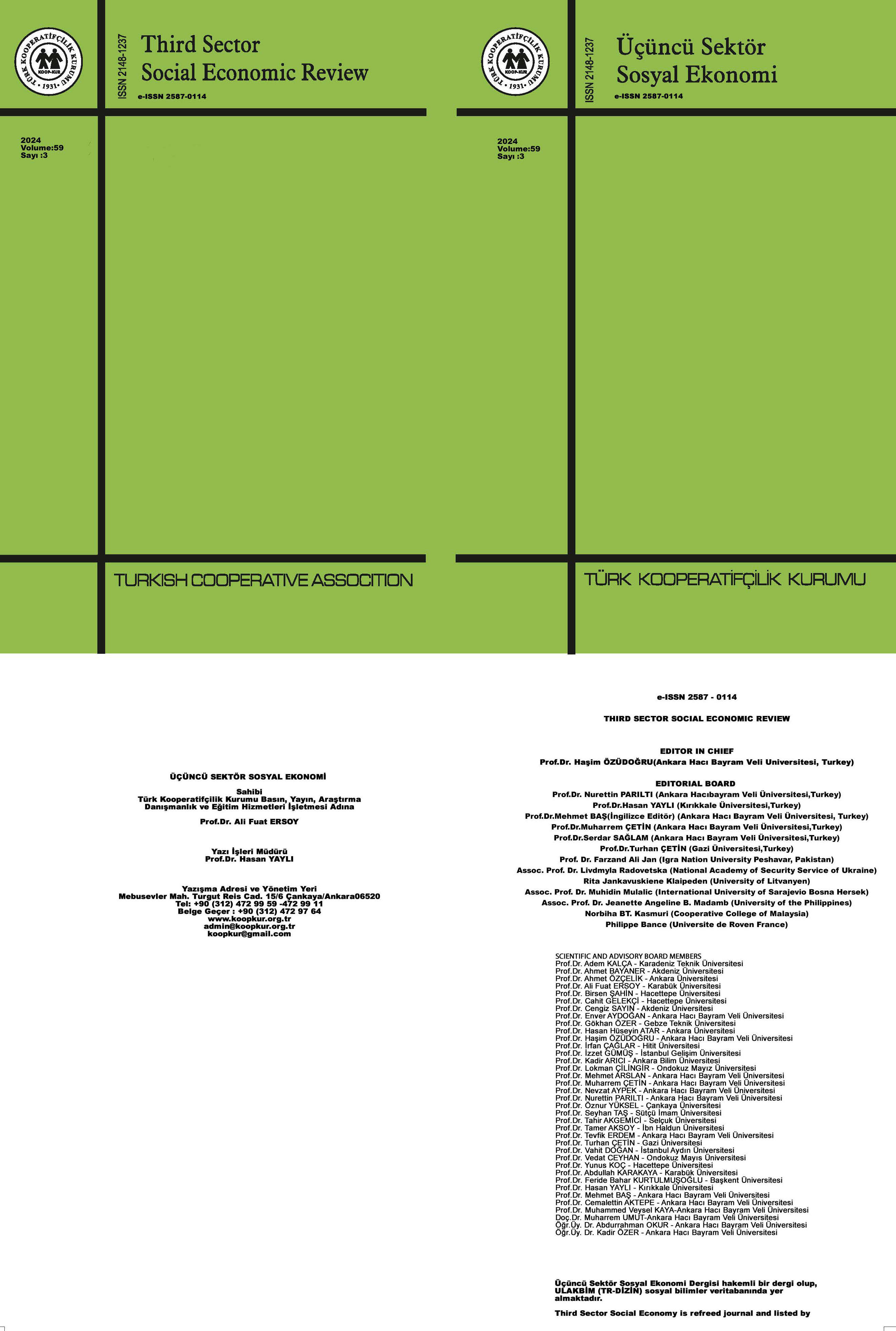SORUNLU KREDİLERİNİN DİNAMİKLERİ – TÜRKİYE ÖRNEĞİ
DOI:
https://doi.org/10.15659/3.sektor-sosyal-ekonomi.24.08.2488Anahtar Kelimeler:
Sorunlu Krediler- ARDL- COVID-19 Öncesi- Ahlaki Tehlike.Özet
Çalışmanın amacı bankaların aktif kalitesinin en önemli göstergelerinden biri olan sorunlu krediler ile temel finansal göstergeler arasındaki ilişkiyi sorgulamak, elde edilen bulgular çerçevesinde piyasa oyuncularının öngörülerine katkı sağlayacak bilgiler sunmaktır. Çalışmada ele alınan dönem 2010 -2019 dönemidir. Çünkü piyasaların normal olmadığı, olağanüstü gelişmelerin yaşandığı dönemlerde çoğu finansal gösterge bozulmakta, normal dönemler için veri oluşturacak bilgi açısından yanıltıcı olabilmektedir. Türkiye ekonomisi 2008 küresel krizinin ardından COVID-19'un ilk belirtilerinin baş gösterdiği 2019 sonuna kadar makro ve mikro verilerde volatilitenin nispeten dengeli olduğu bir dönem geçirmiştir. COVID-19 ile getirilen kısıtlamaların kalkmasına rağmen pandeminin ekonomik etkilerinin ancak yakın gelecekte azalacağı ve sonrasında bankaların aktif yönetiminin pandemi öncesi döneme yakınsayacağı düşünülmektedir. Bir bankanın aktif kalitesinin belirleyici göstergelerinden biri brüt sorunlu kredi stoğunun toplam kredilere oranıdır. Bu çalışmada, küresel piyasalarda nispeten yüksek volatilitenin olmadığı 2010 Ocak ile 2019 Aralık dönemine ait verilerle (ortalama aktif karlılığı, 3 aya kadar ortalama TL mevduat faizi ve toplam yabancı kaynakların toplam özkaynaklara oranı) Türkiye’deki mevduat bankalarının ortalama sorunlu kredi oranının nedenlerine farklı bir bakış açısı getirilmesi amaçlanmıştır. Böylece sorunlu kredilere ilişkin gelecek stratejileri konusunda perspektif çizmek hedeflenmiştir. Yapılan analizler sonucunda ortalama aktif karlılığı ve yabancı kaynağın özkaynağa oranının toplam sorunlu kredi oranı üzerinde negatif ve istatistiksel olarak anlamlı, 3 aya kadar ortalama TL mevduat faizi ile ortalama sorunlu kredi oranı ile pozitif ve anlamlı ilişki olduğu görülmüştür. Ortaya çıkan sonuçlar piyasa disiplini teorisi, ahlaki tehlike, ters seçim sorunu ve kötü yönetim hipotezi çerçevesinde değerlendirilmiştir. Elde edilen bulgularla küresel risklerin yüksek olmadığı dönemlere ilişkin sorunlu kredi yönetimi konusunda bankaların çeşitli çıkarımlarla gelecek stratejilerine katkı sağlanacağı düşünülmektedir.






